Sir Henry Morgan doesn't sound like the name one of the most terrifying pirates in the Caribbean - but the ruthless Captain Henry Morgan propelled himself to fame and riches by terrorizing his enemies and seizing a fortune in gold from the Spanish. The history of piracy is full of surprises, and these Henry Morgan facts are no exception.
Morgan was the son of a Welsh farmer, but he wasn't destined for a life on the farm. Instead, Captain Morgan crossed the Atlantic and became the most famous privateer of the 1600s. He became the leader of a powerful group of pirates called the Brethren of the Coast. He led an army of pirates against the Spanish, eventually capturing the second largest city in the Western Hemisphere. And Captain Morgan didn't waste (all) his gold on booze and wenches - he used his money to buy up huge amounts of land in Jamaica.
Once he became rich, Captain Morgan retired from piracy to become the Governor of Jamaica. After years of terrorizing the Spanish, Captain Morgan became a pirate hero and one of England's most famous men. And he did it all by looting and pillaging.
Was Captain Morgan real? Definitely. And his buccaneering earns him a spot on the list of history's greatest pirates and an unlicensed mascot deal for one of college freshmen's choice liquors.
Captain Morgan Used Nuns To Capture A Spanish Port

Morgan wasn't exactly a pirate - he was a privateer, licensed by the British government to attack the Spanish any time the two countries were at war... which was pretty much all the time in the 1600s. So technically, when Captain Morgan raided the fortified Spanish town of Porto Bello in 1668, it was completely legal.
In spite of the numerous guards, Captain Morgan was able to use a clever tactic to take the town: he used the Spaniards' Catholic faith against them. The captain anchored his ships far away to conceal his attack and struck at night by canoe. Two of the three forts quickly fell. To take the third, Morgan used captured nuns as human shields, taking the city and a handsome pile of gold for his trouble.
Captain Morgan Ransomed An Entire Town For A Fortune
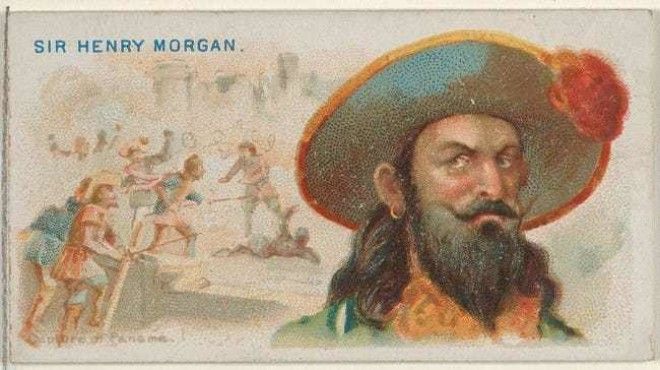
Capturing Porto Bello was only the first step. Captain Morgan knew the Spanish would pay dearly to get the port back, as all the gold and silver from Peru passed through Porto Bello on the way to Spain. Captain Morgan sent a ransom note for the entire city to the governor of Panama. He demanded 100,000 pieces of eight (the Spanish coin-based currency of the time) for the return of the port and its inhabitants, or else he'd burn the entire town to the ground.
And to show he was confident, Morgan also sent the governor a pistol, declaring that it was so easy to take Porto Bello that he was already planning to return in a year to get his pistol back. The frightened governor paid the entire ransom. And Captain Morgan's success in Porto Bello helped him recruit even more followers.
Captain Morgan Was Generous To His Men But He Popped Out Prisoners' Eyeballs

Morgan always promised to reward his men for their service. And he was often more generous than the Royal Navy. In 1670, as he planned the assault on Panama, Morgan drew up self-governing articles, essentially a contract with his followers. The captains of each ship would receive a hefty share of the treasure, while every man was covered by disability compensation in case they were harmed during the raid. The pirates could even get a bonus of 50 pieces of eight for bravery. Morgan only claimed one percent of the profits for himself, sharing generously with his men.
But that generosity ended when it came to prisoners. Captain Morgan wasn't shy about using violence. If he needed information out of a prisoner, Captain Morgan would strap a leather cord around the person's head and tighten it with a metal bar until his eyeballs popped out.
Captain Morgan Blew Up His Own Ship To Take A Port

Captain Morgan's enemies always underestimated him. In 1669, he sailed seven ships to the Venezuelan port of Maracaibo. Although they outnumbered the Spaniards, the Spanish flagship had more firepower than Morgan's entire fleet. But Captain Morgan still sent a demand for surrender to the Don Alonso del Campo y Espinosa, who led the Spaniards. Espinosa would soon regret his choice to refuse.
Morgan ordered his pirates to turn one of their seven ships into a fire ship. It was packed with explosives and aimed toward the Spaniards. Espinosa learned of the plan but dismissed it, saying the pirates "lacked the wit" for the advanced tactic. But Morgan was willing to sacrifice one of his ships to take the port. He sent 12 men on the fire ship, disguised with wooden guns and packed with explosives. At the last minute, they lit their own ship on fire and grappled directly to the Spanish flagship. Fire quickly spread in the Spanish ships, and the pirates easily took Maracaibo, earning 250,000 pieces of eight in ransom money.
Captain Morgan Had No Trouble Recruiting Followers
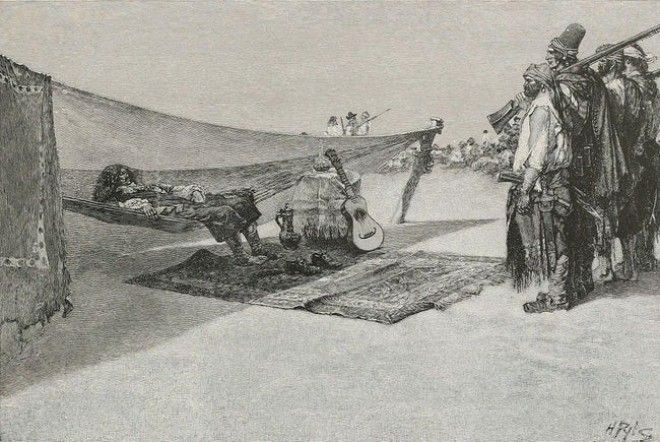
Captain Morgan was one of the most successful privateers in history. And because his devilish raids were so profitable, men were lining up to join his Brethren of the Coast. By the raid on Porto Bello in 1668, the captain already had 500 followers. The next year, that number had risen to 650 men. And after taking 250,000 pieces of eight, Morgan had even more men eager to sail with him.
After Maracaibo, Morgan called for recruits. A stunning 2,000 men and 37 ships showed up at Tortuga on October 24, 1670, eager to hear Captain Morgan's next target.
Captain Morgan Set His Sights On Panama, The Second Largest City In The New World
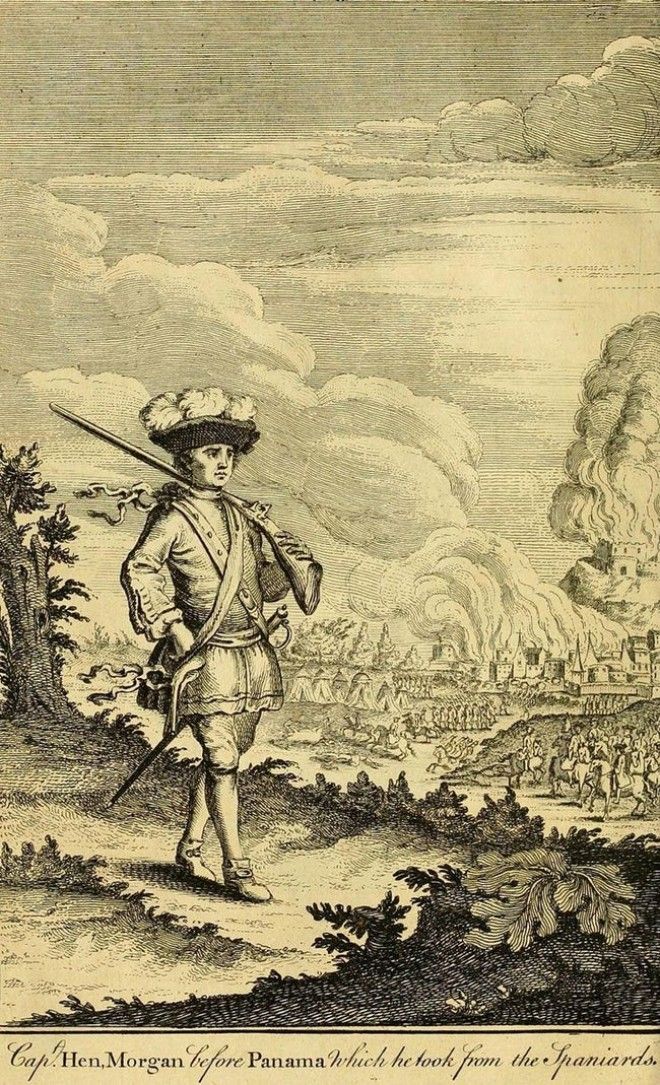
After successful raids in Porto Bello and Maracaibo, Captain Morgan chose a new target: the second-largest city in the New World, Panama. But it wouldn't be an easy target. Panama was the biggest city Captain Morgan had ever attempted to take, and he was leading a much larger force of men than in his previous successful raids. And Panama was on the Pacific side of the isthmus, so Morgan had to lead his men through the jungle before they could take the fortified city. The captain took about 1,000 men on the dangerous journey and prepared his assault on the Spanish stronghold.
In January of 1671, Captain Morgan reached the gates of Panama. He prepared for an assault on the city against the President of Panama, who led 1,200 men and 400 cavalry.
The Pirates Won The Battle of Panama And Even Got A Barbeque For Their Troubles
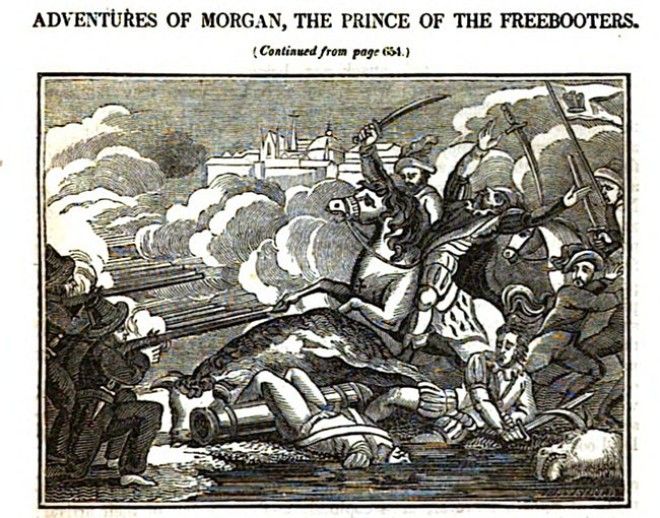
On January 28, 1671, Captain Morgan led the assault on Panama. His enemies had more men, 400 mounted fighters, and some oxen they planned to stampede toward the pirates.
But the Spanish cavalry was no match for Captain Morgan's sharpshooters. And when the Spanish infantry charged, Morgan quickly repelled them and turned the battle into a rout. Not even the oxen phased the pirates. Most of the cattle simply ran away from the noisy battle, while the few that made it to the enemy side were easily killed. Morgan's men were starving after crossing through the jungles of Panama, and they slaughtered the oxen for a victory barbeque.
At the end of the day, 500 Spaniards were dead, and Morgan only lost 15 of his men.
One Of Morgan's Followers Took A Fort With A Single Arrow
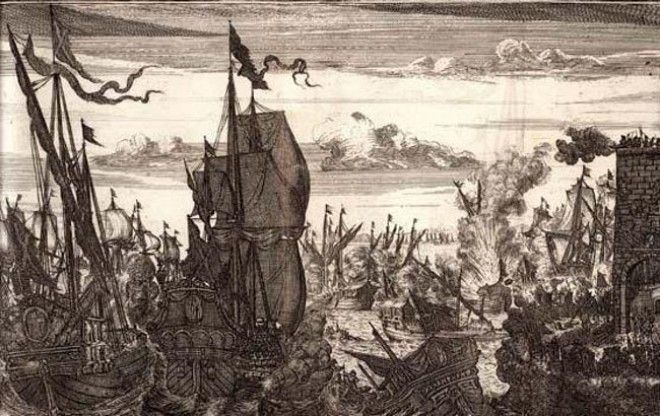
In order to take Panama, Captain Morgan first had to capture a fort at the Chagres River. It wasn't easy, since the Spanish knew the pirates were coming. They were able to double the garrison and increase the number of guns before Morgan could strike.
The frontal assault against the walls was going badly until one of Morgan's men changed the entire battle with a single arrow. Author Alexander Esquemeling wrote that the man was struck by an arrow. He was so angry that he pulled the arrow from his body, wrapped it in a burning rag, and shot it back at the Spanish using his musket. The burning arrow struck the Spanish store of gunpowder, blowing it up and "causing great ruin, and no less consternation to the Spaniards." Because of that one piece of good luck, Morgan's men were able to take the fort.
Captain Morgan's Pirates Controlled The Caribbean

Captain Morgan became the leader of a group of pirates called the Brethren of the Coast, and they completely dominated the Caribbean. The Brethren sprang up around 1618, during the Thirty Years' War. The Spanish used their rich territories in the Caribbean to fund the war effort, so their European rivals, the Dutch and English, encouraged private captains to attack Spanish ships.
By the time that Captain Morgan led the Brethren, they had bases all across the Caribbean, in Tortuga, Port Royal, and Nassau. The Brethren raided Spanish ships, halting the flow of gold and silver to Spain, and making themselves rich in the process. And during their decades of dominating the Caribbean, they helped develop the pirate code, which would define pirate life for centuries.
The King Of England Knighted Captain Morgan, Even Though He Was A War Criminal
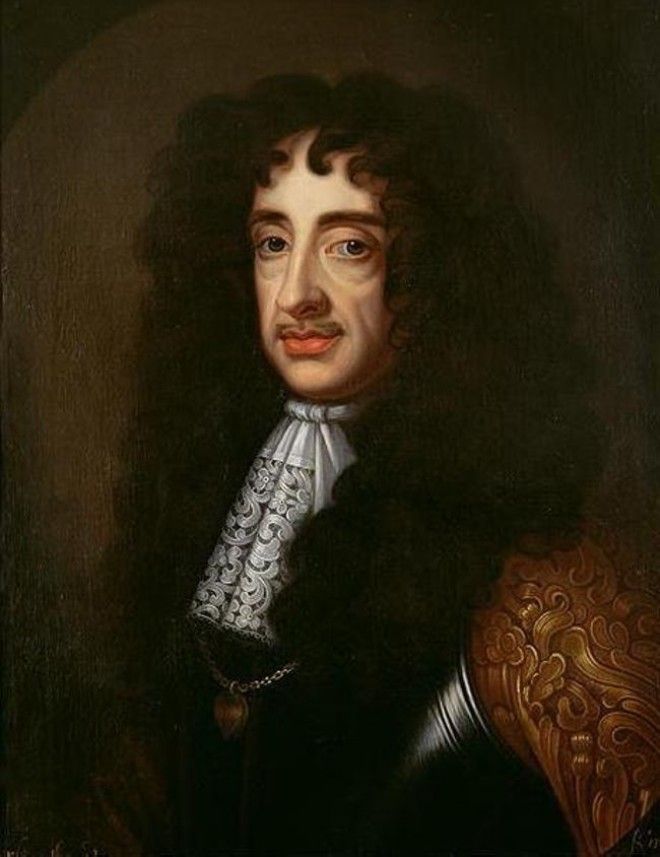
Captain Morgan was a privateer, which meant he had official sanction from the English to raid the Spanish during times of war. When the two nations were at peace, Morgan was supposed to stand down. However, during his most infamous attack, when Morgan took Panama, the Spanish had already signed a peace treaty with England. Officially, Captain Morgan was an illegal pirate committing war crimes.
When Captain Morgan returned to Jamaica after taking Panama, the governor arrested him and Morgan was sent to England to stand trial. But Morgan was treated like a celebrity, and even though the Spanish were furious, King Charles II knighted Captain Morgan in 1674. The captain eventually returned to Jamaica, where he served as acting governor for several years.
Captain Morgan Was The Inspiration For Captain Blood

Captain Morgan's reputation was so powerful that he is considered one of the greatest pirates in history, even though he was technically a privateer rather than a pirate. In 1922, Raphael Sabatini even based his famous Captain Blood on Captain Morgan's life.
But Morgan only spent part of his life as a privateer. After the successful raid on Panama, he retired from piracy, devoting the rest of his life to Jamaica. By then, Morgan had used much of his wealth to buy up land on the island, and he served as Lieutenant Governor and acting governor of the island until his death in 1688. He was so loved by the English that he was given a state funeral.
Captain Morgan was able to use his brutal but clever tactics to turn himself into a respectable landowner, proving that he was also one of history's most brilliant pirates.
Captain Morgan's Epic Life Apparently Inspired The Seagram Company
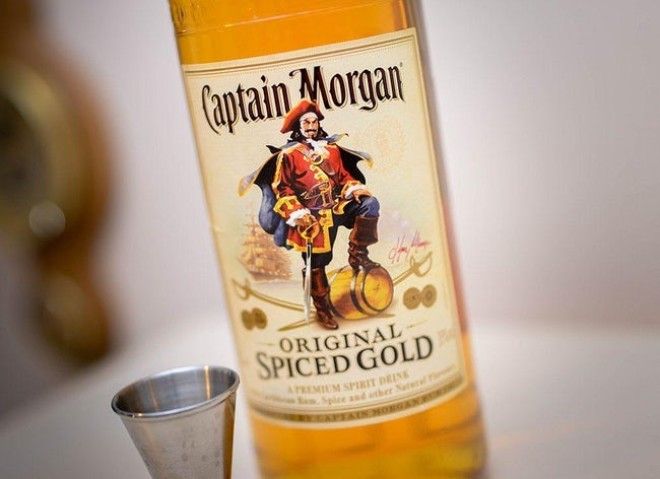
So how did Captain Morgan become associated with one of the most popular brands of spirits in the United States? The Seagram company began using his name in 1944, and Captain Morgan Original Spiced Rum didn't reach the U.S. until 1984. Since then, it has become a quintessential brand, especially among college students and the spring break crowd.
Still, it's pretty bizarre that Henry Morgan became the inspiration for Captain Morgan's rum. The real Captain Morgan was incredibly strategic, and he used his years of piracy to propel himself into the richest classes of society. As Graham Thomas explains, Morgan was "a planner, a brilliant military strategist and intensely loyal to the king, to England and to Jamaica." But he also established himself as a politician and proponent of peaceful trade, leaving behind piracy for life as a rich, respected landowner. Most folks who consume Captain Morgan on a regular basis are unlikely to possess the brilliance and strategy of the man on the bottle.

